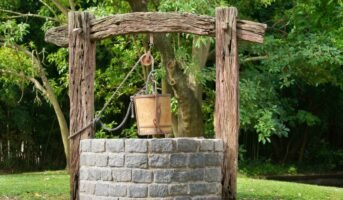Decorating one’s garden is not a daunting task at all. Usually, gardeners or dendrophiles love to add flowers to their garden decoration list. We all love to flaunt flowers in our garden or rooftop sides. They can highlight the beauty of the garden with their vibrant coloured petals. Also, you can plant specific flowers in every season. But, what if you do something unusual? What if your garden is decorated with foliage plants? Foliage plants can be a unique but magnificent add-on to your garden.
In your garden, picking the right foliage plants can have a huge splendid impression. Select foliage that will complement your garden or balconies with striking shapes, delicate textures, or even vibrant colours. So, even if you do not change plants in every season, you can experience and enjoy new appearances in every season.
So, are you convinced to make your garden as unique as possible? If so, then we are happy to let you know that we have gathered a handpicked list of foliage plants that can easily make your garden awe-inspiring.
See also: How to grow and care for Purple Leaf plants?
List of foliage plants for gardens and rooftops
Caladium foliage plants
Caladium plants are also known as angel wings. This variant has comparatively larger leaves with arrowhead shapes. You can also decorate your garden yards with this plant. In the winter season, you can keep this plant inside your house to save it from winter wind.
Features: This is tuberous perennial foliage with a maximum height of 18 to 24 inches. You can see red, pink, and white leaves in this foliage plant.
Care tips: Make sure that direct sunlight is absent in that particular space. Do not overwater the plant. The soil for caladium must include organic matter.
Toxicity: This plant is completely toxic if consumed raw.
Artemisia foliage plants
If you want to keep a unique foliage plant inside your home, artemisia can be your right selection. Its leaves are airy and magnificent.
Features: These foliage plants have airy purple, white and mauve-shaded leaves. Leaves are different in several variants like wormwood, southernwood, sweet annie, etc.
Care tips: You must cut down those old dried foliage to save the tree. Keep the plant in a full sunlight for better growth.
Toxicity: This plant should not be consumed directly due to its poisonous nature.
Coleus foliage plants
Coleus is one of gardeners’ most planted foliage choices because of its magnificent appearance. This plant is known as a favourite bedding plant for many.
Features: It consists of green and magenta shaded leaves with two-lipped flowers.
Care tips: Keep this plant in a partial to full sun. Water it twice during high temperatures.
Toxicity: This foliage is not toxic at all.
Hosta foliage plants
Hostas make such wonderful foliage plants for your garden. Often, people remove the flowers to make the foliage part more enchanting.
Features: Hostas are utilised in landscape design as tiny shrubs. They offer an astounding range of sizes and colors. Their foliage comes in every shade of green, from the lightest yellow to almost pure blue. The size of leaves can vary greatly. They can be enormous paddle-shaped leaves to tiny, smooth, needle-like leaves.
Care tips: Hostas need moderate water. Also, keep this plant in partial shade for good growth.
Toxicity: This plant is toxic, especially, for children and pets.
See also: How to grow and care for Hosta plant?
Persian shield foliage plants
The Persian shield plant has nearly luminescent leaves.
Features: In hot climates, this plant maintains its evergreen status. In colder climates, it is grown annually or as a houseplant. If you choose to keep yours indoors during the winter, it will be simple to take cuttings in the spring to plant outdoors.
Care tips: You can easily save this plant in direct sunlight with a partial reach of the sun. Keep the soil moist always.
Toxicity: Though the plant is not toxic, it is advised to keep this away from pets.
Plectranthus foliage plants
The bushy plant list includes a very green plectranthus plant.
Features: This is a free-growing plant that can easily adjust to tropical weather.
Care tips: You need to maintain damp soil to grow the plant in good condition. Keep the soil moist. Mix organic materials into the soil. Also, partial shade is required for better growth.
Toxicity: It can cause nausea if consumed. Otherwise, no other toxicity is found.
Amaranthus tricolour foliage plants
A very bright-coloured foliage plant option is amaranthus tricolour which has its charm even in the lovely rainy season.
Features: You will be amazed by the rarest combination of yellow and orange with a shade of red. This plant is easy to start from a preserved seed, and you can plant it as an annual plant in your house.
Care tips: Arrange fertile soil with pH 6.5. Also, you have to keep a proper check on the water level. Make sure that the plant is in full sun.
Toxicity: This plant is not poisonous to either pets or humans.
Creeping liriope foliage plants
Creeping liriope is another favorite house foliage plant of gardeners or endrophiles. It can reach a height of approximately one foot while mature.
Features: Liriope resembles grass, making its appearance catchy even in small garden areas. Although liriope produces lovely, spiky white or lavender flowers, its leaves make it appealing.
Care tips: Keep the plant in direct sunlight for good growth. Water only when required. Overwatering can cause root damage.
Toxicity: The creeping liriope is toxic to pets.
Wall germander foliage plants
Because of its wide appearance, the broadleaf evergreen wall germander can be your handpicked choice of foliage plants. If possible, make a short and decorative hedge.
Features: This plant produces small, glossy, dark green leaves with toothed edges. Little pinkish-purple flowers will appear in late spring or early summer.
Care tips: After flowering, make sure to trim the plant as required. With proper trimming, it can adopt a bushy look. Water very little to this plant.
Toxicity: This foliage is toxic to the human liver.
Tricolour sage foliage plants
Although tricolour sage plants produce violet-coloured flowers, their diverse leaves are the main reason they are one of the best foliage collections.
Features: This foliage’s younger leaves are purplish. On the other hand, the older leaves have an uneven white border and a green center.
Care tips: Make sure not to overwater the tricolour sage. Keep the soil dry to moist. Partial to full shade is required for this.
Toxicity: This plant is toxic.
Conclusion
So, these well-known foliage plants can easily steal your heart with their ambiance. With proper care, grow a nice row of foliage plants inside your house or garden.
FAQs
What is foliage?
Foliages refers to the very leafy part of any plant.
What is the main benefit of foliage plants?
Foliage plants are widely used as indoor or decorative plants in gardens or yards.
What are some examples of foliage plants?
Some major foliage plants are hosta, pothos, kentia palms, boxwood, etc.
What are the significant features of foliage leaves?
Usually, foliage leaves are entirely different from the primary leaves of the plants. Some also contain juicy leafy areas or thin petioles.
Is the foliage plant poisonous?
Some foliage plants are quite poisonous. Though not all are the same, you should keep these plants away from children and pets, especially if you keep these plants in your indoor areas.
Do all foliage plants have vibrant colours?
No, not all foliage plants contain eye-catching colorus. Some have their kinds of distinct shapes or sizes.
Where should you keep foliage plants inside your home?
Keep foliage plants in places where direct sunlight is absent but natural light is available for at least 6 to 8 hours.
| Got any questions or point of view on our article? We would love to hear from you. Write to our Editor-in-Chief Jhumur Ghosh at jhumur.ghosh1@housing.com |
Nisha A Rawat, diligently tracks the residential real estate trends and offers valuable insights in her articles. She’s skilled at making real estate terminology easy to understand, ensuring accessibility for all. Nisha’s articles are well-researched and analytical.












